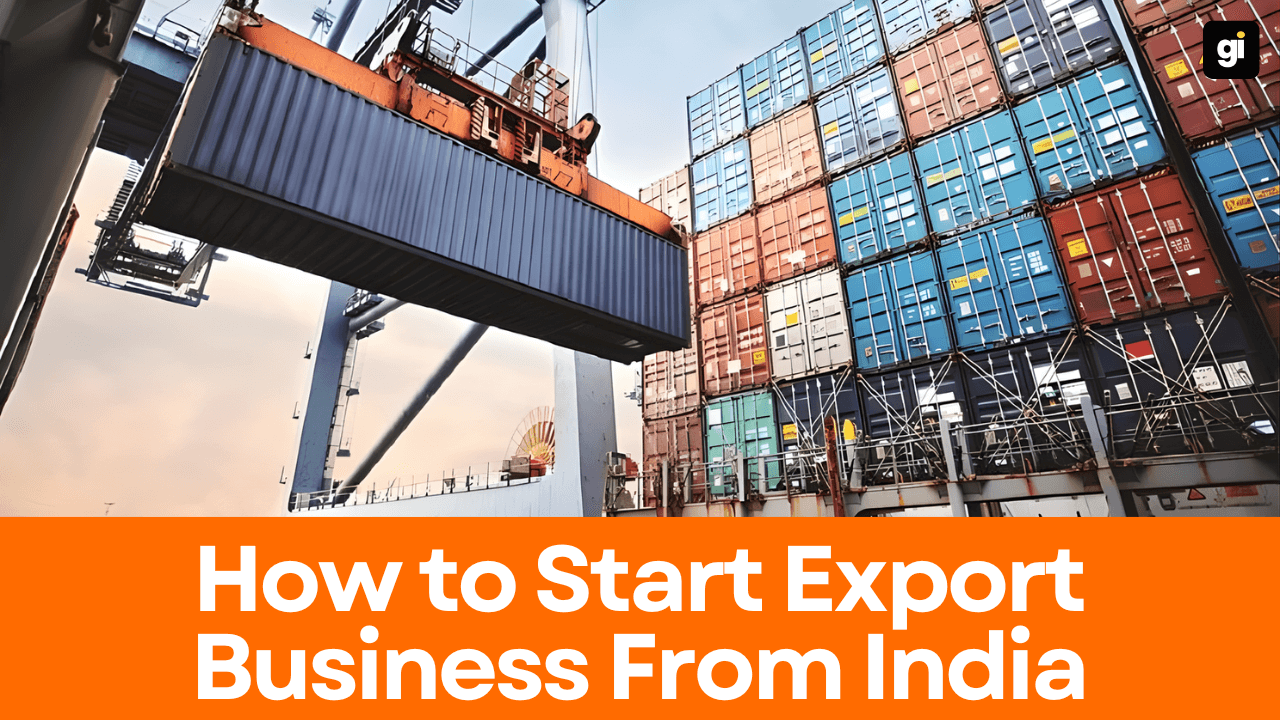How to Start Export Business From India: A Complete Guide

India has always been known for its rich culture, skilled craftsmanship, and diverse resources, and today, these same strengths are helping thousands of Indian entrepreneurs tap into global markets. From spices and textiles to engineering goods, pharmaceuticals, and handicrafts, Indian exports are finding their way into homes and businesses across the world.
If you’ve ever thought about selling your products internationally but didn’t know where to start, this article will guide you step by step on how to start an export business from India, without making it sound like a textbook.
Step 1: Understanding What Exporting Really Means
Starting an export business from India doesn’t require you to be a giant manufacturer. Even small businesses, traders, or startups can sell globally. In simple terms, exporting means selling goods or services produced in India to customers in another country and earning foreign currency in return.
You can either manufacture and export your own goods or become a merchant exporter who buys from local producers and sells abroad. Both models can be profitable, depending on how well you understand your market and manage your network.
Step 2: Choosing the Right Product
Before anything else, you need to decide what to export. The best approach is to start with something that’s already in demand globally and available locally at competitive prices.
Some of India’s most successful export products include:
- Agro and food products such as rice, spices, and tea
- Textiles, garments, and leather goods
- Handicrafts and home décor items
- Engineering and industrial goods
- Processed foods, herbal products, and organic items
Don’t pick a product just because others are doing it. Research global trends, profit margins, and your ability to source or produce it reliably.
Step 3: Finding the Right Market
Once you know what you’ll export, find out where it sells best. For example, Indian basmati rice is popular in the Middle East and the UK, while organic tea has great potential in Europe and Japan.
Use resources like ITC Trade Map, DGFT Export Data Bank, and global B2B portals to identify countries importing your product in large quantities.
This stage isn’t just about numbers. It’s about understanding buyer preferences, packaging standards, and logistics costs. A little research here can save you big headaches later.
Step 4: Registering and Setting Up Your Export Business
Merge registration with bank and compliance setup:
- Business registration, PAN, and current account.
- Apply for IEC (Import Export Code) on the DGFT portal.
- Obtain RCMC from the relevant Export Promotion Council.
- Register your AD Code with customs via ICEGATE; this links your bank to your shipping documents and allows foreign-currency payments.
- If exporting regularly, set up a LUT (Letter of Undertaking) under GST to export without paying IGST.
Also Read This: Turn Waste into Wealth: Discover the Power of Banana Fiber
Step 5: Documentation and Compliance Essentials
- Core documents: Commercial Invoice, Packing List, Bill of Lading/Airway Bill, Certificate of Origin, Insurance Certificate, and Shipping Bill (ICEGATE).
- Product compliance: meet destination-country standards, proper labeling/barcoding, and export-grade packaging.
- Keep digital copies ready – most customs clearances are now paperless.
Step 6: Finding Buyers and Managing Shipments
Finding reliable buyers and ensuring smooth shipments are the backbone of a successful export business. This step helps you connect with genuine international buyers and manage logistics efficiently to deliver your products safely across borders.
- Connect with buyers via B2B portals, trade fairs, LinkedIn, and Indian embassies.
- Verify importer details before large orders.
- For logistics, work with a freight forwarder or CHA to handle transport, insurance, and customs clearance.
- Understand INCOTERMS (FOB, CIF, DDP, etc.) before quoting prices.
- Packaging and insurance can make or break trust in first shipments.
Step 7: Pricing, Payments, and Incentives
- Price includes product cost + packaging + transport + insurance + customs + profit.
- Get paid securely through bank channels (SWIFT, Letter of Credit, Advance Payment, or DA/DP terms).
- Protect against default using ECGC insurance.
- Claim government benefits like RoDTEP, RoSCTL, and Interest Equalization Scheme via the DGFT portal; also claim GST refunds if applicable.
Conclusion
Starting an export business from India is one of the most rewarding ventures you can take up today. It doesn’t require massive capital, but it does demand patience, research, and reliability. The world already loves Indian products; it’s just waiting for more exporters who can deliver them well.
So, if you’ve been thinking about going global, start now. Register your business, research your market, find your first buyer, and take that leap. Every big exporter today once shipped their first small order.
Table of Contents

